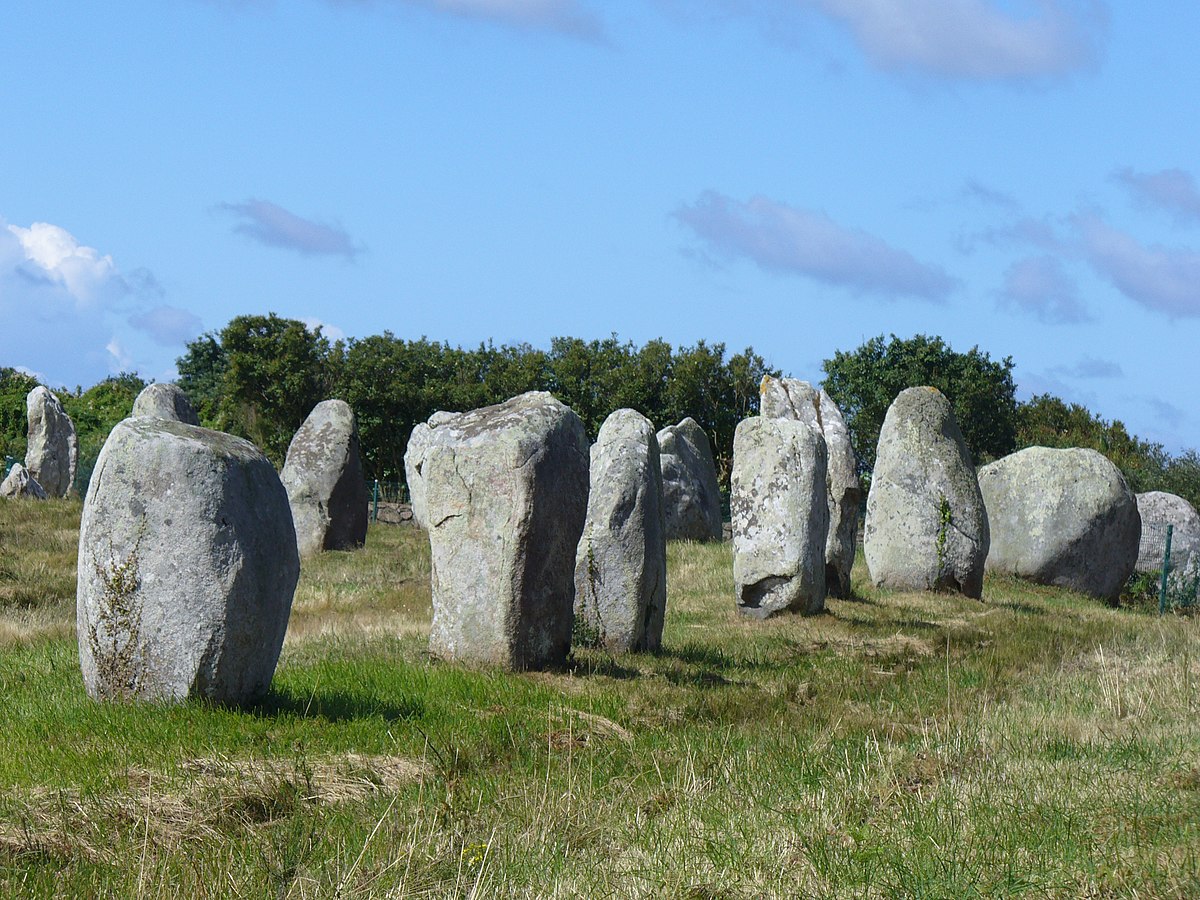Ancient walls built with massive stones have fascinated archaeologists and engineers for centuries. These incredible structures, known as Cyclopean walls, stand as testament to remarkable engineering prowess achieved without modern technology. Their construction methods remain one of archaeology’s most intriguing mysteries.
The term “Cyclopean” originates from Greek mythology, where it was believed that only the Cyclopes—mythical one-eyed giants—possessed the strength to move and position such enormous stones. Today, we understand these walls were crafted by human hands, making their achievement even more extraordinary. From the fortifications of Mycenae to the terraces of Sacsayhuamán, these architectural marvels continue to challenge our understanding of ancient capabilities and inspire modern engineering practices.
🏛️ The Origins and Definition of Cyclopean Masonry
Cyclopean masonry represents a distinctive building technique characterized by the use of massive limestone boulders, roughly fitted together with minimal use of mortar. These construction methods emerged independently across various ancient civilizations, spanning from Bronze Age Greece to Pre-Columbian South America. The defining feature lies not merely in size, but in the precision with which irregularly shaped stones fit together like an intricate three-dimensional puzzle.
Archaeological evidence suggests that Cyclopean construction peaked during the Late Bronze Age, particularly between 1400 and 1200 BCE in the Mediterranean region. The technique wasn’t limited to defensive fortifications; it was employed for creating terrace walls, tomb chambers, and even water management systems. What unites all Cyclopean structures is their durability—many have survived earthquakes, wars, and millennia of weathering with minimal degradation.
Engineering Principles Behind the Ancient Giants
The engineering sophistication of Cyclopean walls becomes apparent when examining their construction principles. Ancient builders demonstrated profound understanding of load distribution, friction coefficients, and structural stability—concepts that modern engineering has only recently quantified mathematically. The polygonal fitting technique, where stones of irregular shapes interlock perfectly, creates inherent structural redundancy that surpasses many contemporary construction methods.
Load Distribution and Stability Mechanisms
The genius of Cyclopean construction lies in how weight is distributed throughout the structure. Unlike mortared walls that rely on binding agents, these walls depend on gravity and precise stone placement. Each block’s irregular shape creates multiple contact points with adjacent stones, distributing compressive forces across a wider area. This principle, known as “stress dispersion,” prevents concentration of forces that could lead to structural failure.
The slight inward lean observed in many Cyclopean walls—typically between 2 and 5 degrees—further enhances stability. This batter angle directs gravitational forces toward the wall’s center of mass, creating a self-stabilizing structure. Modern seismic engineers have discovered that this ancient technique provides remarkable earthquake resistance, as the stones can shift slightly during tremors without the wall collapsing.
The Puzzle of Precision Fitting
Perhaps the most bewildering aspect of Cyclopean walls is the precision with which stones fit together. Gaps between stones often measure less than a millimeter, achieving tolerances that would challenge modern stonemasons equipped with power tools. Recent studies using laser scanning technology have revealed that contact surfaces between stones sometimes exceed 70% of their total interface area—an extraordinary achievement considering the irregular geometries involved.
Researchers have proposed several techniques ancient builders might have employed to achieve such precision. The most plausible theory suggests a process of iterative fitting: stones were temporarily positioned, marked where they made contact, removed for grinding or chipping, then repositioned. This cycle continued until optimal fit was achieved. Some evidence supports the use of abrasive sands and water as grinding mediums, allowing workers to gradually shape contact surfaces.
🌍 Global Distribution: A Worldwide Phenomenon
Cyclopean construction techniques appeared independently across continents, suggesting that diverse cultures discovered similar solutions to common architectural challenges. This parallel development offers fascinating insights into human innovation and the universal principles of engineering that transcend cultural boundaries.
Mediterranean Masterpieces
The Mediterranean region hosts some of the most studied Cyclopean structures. The Lion Gate at Mycenae, dating to approximately 1250 BCE, features a lintel stone weighing over 20 tons, positioned precisely atop vertical jambs. The walls of Tiryns, another Mycenaean citadel, reach thicknesses of up to 8 meters and incorporate sophisticated galleries and chambers within their mass.
In Italy, the pre-Roman civilizations constructed numerous Cyclopean fortifications. The walls of Cosa, Norba, and Alatri demonstrate technical variations on the basic principle, with some incorporating more regular rectangular blocks while maintaining the massive scale characteristic of the tradition. These structures influenced later Roman engineering, which adopted and refined many Cyclopean principles in their own construction projects.
South American Wonders
The Inca civilization and their predecessors created Cyclopean structures that rival or exceed Mediterranean examples in technical sophistication. Sacsayhuamán, overlooking Cusco, features stones weighing up to 200 tons, fitted with such precision that even today a knife blade cannot be inserted between them. The site’s zigzag walls employ complex three-dimensional interlocking that creates exceptional structural integrity.
Recent research at Ollantaytambo has revealed that Inca stonemasons possessed advanced understanding of stone properties. They selected specific rock types based on their fracture characteristics and workability, demonstrating geological knowledge that complemented their engineering expertise. The precision achieved in Andean Cyclopean construction often surpasses Mediterranean examples, raising questions about independent technological development versus possible knowledge transfer.
Construction Methods: Unraveling Ancient Techniques
Understanding how ancient peoples constructed Cyclopean walls without modern machinery requires examining archaeological evidence, experimental archaeology, and traditional stoneworking knowledge. While some mysteries remain, researchers have developed plausible reconstructions of the construction process.
Quarrying and Transportation
The journey from quarry to wall site presented enormous logistical challenges. Ancient builders identified suitable stone sources, often selecting locations that minimized transportation distances while providing appropriate stone qualities. Quarrying techniques varied by region and stone type but typically involved exploiting natural fracture planes within rock formations.
Workers created controlled fractures using the “fire and water” method, where heating stone surfaces then rapidly cooling them with water caused thermal shock and cracking. Wooden wedges driven into natural or artificial cracks, then soaked with water to expand, provided another splitting technique. Once freed from bedrock, stones were transported using wooden rollers, sledges, and potentially rope systems with multiple workers providing motive force.
Shaping and Fitting Technologies
The tools available to Bronze Age stonemasons were surprisingly limited: bronze chisels, stone hammers, and abrasive materials. Yet with these simple implements, they achieved remarkable precision. Experimental archaeology has demonstrated that systematic percussion with stone hammers can shape even hard granite, though the process is time-intensive and labor-demanding.
For final fitting adjustments, ancient masons likely employed a combination of techniques. Pecking—striking stone surfaces with hard hammerstone points—created controlled removal of material. For softer limestones, bronze tools sufficed for detailed shaping. The use of wooden or stone templates helped transfer complex three-dimensional shapes from one stone to its neighbor, ensuring proper fit.
⚡ Seismic Resistance: Ancient Wisdom Meets Modern Science
One of the most remarkable characteristics of Cyclopean walls is their exceptional earthquake resistance. While many modern buildings crumble during seismic events, these ancient structures have survived thousands of years in tectonically active regions. Contemporary engineers studying Cyclopean construction have discovered principles applicable to modern seismic design.
Flexible Stability Principle
The secret to Cyclopean walls’ seismic performance lies in what engineers call “controlled flexibility.” Unlike rigid structures that resist seismic forces until catastrophic failure occurs, Cyclopean walls allow limited movement between stones. During earthquakes, individual blocks can shift slightly, absorbing and dissipating seismic energy. Once ground motion ceases, gravity and friction return the stones to stable configurations.
This principle contrasts sharply with mortared masonry, where the binding agent creates rigid connections that accumulate stress until fracturing. The absence of mortar in Cyclopean construction eliminates this failure mode, creating structures that become stronger and more stable as compression increases from overlying weight.
Modern Applications and Lessons
Contemporary architects and engineers have begun incorporating Cyclopean principles into modern designs, particularly for structures in earthquake-prone regions. The concept of “base isolation”—allowing buildings to move independently from ground motion—echoes the flexibility inherent in ancient walls. Some modern retaining walls and coastal defenses now employ interlocking blocks without mortar, directly applying Cyclopean concepts with modern materials.
Japanese earthquake engineering has particularly embraced lessons from ancient construction. Traditional stone castle walls in Japan, similar to Cyclopean construction, demonstrated superior seismic performance. This observation has influenced modern building codes and architectural practices throughout the region.
🔬 Scientific Analysis: Modern Technology Reveals Ancient Secrets
Contemporary analytical techniques have revolutionized our understanding of Cyclopean construction. Tools unavailable to earlier researchers now provide unprecedented insights into ancient engineering practices and the materials employed.
Laser Scanning and Photogrammetry
High-resolution 3D scanning technologies enable researchers to document Cyclopean structures with millimeter precision. These digital models reveal patterns invisible to traditional observation methods, including systematic variations in stone placement, evidence of original surface treatments, and signs of ancient repair work. Photogrammetry—creating three-dimensional models from multiple photographs—provides cost-effective documentation of entire sites.
Analysis of these detailed models has revealed previously unrecognized construction sequences. By examining slight variations in technique and stone treatment throughout a wall, researchers can identify construction phases, multiple work crews, and even potential changes in engineering leadership during prolonged building projects.
Geochemical and Petrographic Studies
Laboratory analysis of stone samples provides crucial information about quarry sources and construction techniques. Petrographic examination—studying thin rock sections under microscopes—identifies specific mineral compositions and rock textures that fingerprint particular geological formations. This allows researchers to match wall stones with their original quarries, revealing transportation distances and source selection criteria.
Geochemical analysis has also revealed evidence of ancient surface treatments. Some Cyclopean walls show traces of mineral deposits consistent with the application of solutions designed to harden or seal stone surfaces. These treatments may have enhanced durability or provided aesthetic finishing, demonstrating sophistication beyond mere structural engineering.
Cultural Significance and Social Organization
Constructing Cyclopean walls required more than engineering knowledge—it demanded sophisticated social organization capable of mobilizing and coordinating large labor forces. These structures therefore provide insights into ancient social hierarchies, economic systems, and cultural values.
Labor Organization and Specialization
Building a major Cyclopean fortification involved hundreds or thousands of workers over years or decades. This required systems for feeding, housing, and managing laborers, plus hierarchies of specialized craftspeople: quarry workers, transporters, masons, and engineers. Archaeological evidence from construction sites reveals organized work areas, specialized tool caches, and administrative structures that coordinated these complex projects.
The question of whether labor was slave-based, tributary, or compensated wage work varies by culture and period. Recent archaeological evidence from Mediterranean sites suggests more nuanced labor systems than previously assumed, with skilled craftspeople receiving compensation while unskilled labor might have been tributary obligation. In the Andes, the mit’a system of rotating labor service provided the workforce for major construction projects.
Symbolic and Defensive Functions
While Cyclopean walls certainly served defensive purposes, their massive scale often exceeded purely military requirements. These structures made powerful symbolic statements about community strength, elite authority, and cultural identity. The enormous effort required for construction demonstrated a polity’s ability to marshal resources, serving as deterrent through intimidation as much as physical barrier.
The choice to build in Cyclopean style, despite requiring far more effort than alternative construction methods, suggests that the impressive appearance and cultural message justified the additional investment. These walls became defining features of community identity, landmarks visible from great distances that proclaimed power and permanence.
🎯 Preservation Challenges and Conservation Efforts
Despite their legendary durability, Cyclopean walls face numerous preservation challenges. Environmental factors, human activity, and the simple passage of millennia threaten these irreplaceable heritage sites. Conservation efforts require balancing structural stabilization with archaeological integrity and authenticity.
Natural Deterioration Processes
Even the most robust Cyclopean construction gradually succumbs to weathering. Water infiltration, particularly freeze-thaw cycles in temperate climates, causes progressive degradation. Biological colonization by lichens, mosses, and plant roots creates mechanical stresses that separate stones and accelerate decay. In coastal locations, salt crystallization within stone pores causes similar deterioration.
Earthquakes, ironically, present preservation challenges despite Cyclopean walls’ excellent seismic performance. While walls typically survive tremors structurally intact, accumulated micro-movements over centuries can gradually destabilize sections. Modern conservation must address both immediate risks and long-term cumulative effects.
Conservation Methodologies
Preserving Cyclopean structures requires approaches that differ significantly from typical archaeological conservation. The massive scale and unique construction method demand specialized techniques. Conservators must decide between minimal intervention—stabilizing only critically threatened sections—and more aggressive reconstruction of collapsed portions.
Modern conservation increasingly employs reversible interventions that can be removed if future technologies offer better solutions. This includes careful documentation before any work, using compatible materials that don’t chemically damage original stones, and designing stabilization measures that remain distinguishable from ancient fabric. International guidelines emphasize preserving authenticity while ensuring structural safety for both the monument and visitors.
The Legacy of Cyclopean Engineering Today
The influence of ancient Cyclopean construction extends far beyond archaeological interest. Contemporary architects, engineers, and sustainability advocates find relevant lessons in these time-tested techniques. As modern society confronts challenges of resource efficiency and long-term durability, ancient solutions offer unexpected relevance.
Sustainable construction movements increasingly recognize that longevity represents the ultimate sustainability. Cyclopean walls, functioning effectively for millennia without maintenance, embodied principles now central to green building philosophy: using local materials, minimizing processing and transportation, creating durable structures, and designing for disassembly and material reuse. The walls’ carbon footprint, distributed across thousands of years of service, remains remarkably low.
Educational programs increasingly feature Cyclopean construction as case studies demonstrating that technological sophistication doesn’t require complex tools. These examples counter assumptions that progress means increasing complexity, showing how deep understanding of materials and forces can achieve remarkable results with simple means. Engineering students studying Cyclopean walls gain insights into fundamental structural principles unobscured by modern materials and calculation methods.
The ongoing research into Cyclopean construction methodologies continues revealing new insights. Each archaeological discovery, each successful experiment in ancient technique reproduction, and each application of new analytical technology adds to our understanding. These ancient walls still have secrets to share, lessons to teach, and inspiration to provide for those willing to study their enduring testimony to human ingenuity and determination.
Toni Santos is a visual researcher and educational designer specializing in tactile learning tools, exploring how hands-on, sensory experiences can illuminate ancient construction techniques, lost technologies of early civilizations, sacred geometries and earth alignments, and mysterious energy sources. Through embossed maps, textured models, and handcrafted manipulatives, Toni investigates how physical interaction deepens understanding, memory, and creativity, while uncovering the subtle ways these tools convey knowledge across cultures and ages. Blending design theory, educational psychology, and archival research, Toni curates case studies, visual explorations, and instructional resources that celebrate the craft, innovation, and cognitive power of touch-based learning, inviting educators, designers, and curious minds to engage with the hidden patterns and energies that have shaped human history.




